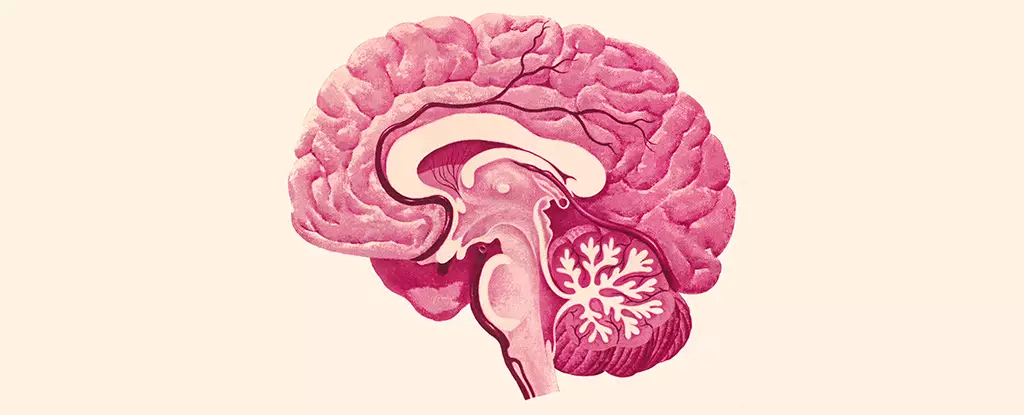Recent advancements in research have brought to light a crucial connection between the herpes simplex virus type 1 (HSV-1) and its ability to infiltrate the brain and central nervous system. This phenomenon has garnered attention not only for its implications in neurological health but also for its potential link to neurodegenerative conditions like Alzheimer’s disease. A study spearheaded by scholars from the University of Colorado and the University of Bourgogne has meticulously examined how HSV-1 propagates its influence in the brain, highlighting previously uncharted territories in our understanding of viral infections and their cerebral ramifications.
HSV-1, typically known for causing cold sores, is capable of entering the central nervous system through two principal pathways: the trigeminal nerve and the olfactory nerve. However, the precise mechanisms by which the virus spreads throughout the brain remain enigmatic. The insights from this research pave the way for clearer understanding and provide critical knowledge that could inform future studies and therapeutic strategies.
The researchers’ analysis demonstrated that HSV-1 targets several vital regions within the brain. Notably, areas such as the brain stem and the hypothalamus were identified as primary sites of viral involvement. The brain stem plays a pivotal role in regulating fundamental physiological functions, including heart rate, breathing, and sleep patterns, while the hypothalamus is integral to various bodily functions, such as hormone regulation, mood, and appetite control. The findings indicate that HSV-1 can disrupt the normal functioning of these vital regions, raising concerns about the long-term impacts of such viral interactions.
Interestingly, the study also revealed that certain areas such as the hippocampus, which is crucial for memory and spatial orientation, and the cortex, known for its involvement in memory and attention, were largely spared from the presence of HSV-1 antigens. This observation offers a glimmer of hope, suggesting that not all regions of the brain are susceptible to the virus and that some areas might maintain functionality despite the presence of HSV-1 elsewhere in the central nervous system.
An important aspect of the research was the evaluation of microglia, the resident immune cells in the central nervous system that respond to infections and injuries. The study found that these immune cells exhibited elevated activity in response to HSV-1, resulting in inflammation. Even after the virus was no longer detectable, the inflammation persisted in some regions, hinting at chronic activation of these immune cells. This phenomenon raises critical questions about the potential for lasting damage and dysfunction in the affected brain areas.
Neurologist Christy Niemeyer emphasizes that the presence of HSV-1, while not resulting in severe conditions like encephalitis in this context, could still compromise the functionality of essential brain regions. The ongoing inflammation driven by microglial activity may lead to subtle but significant dysfunctions that could contribute to the development or exacerbation of neurodegenerative diseases over time.
As the evidence mounts, researchers are increasingly examining the potential relationship between HSV-1 infections and neurodegenerative diseases such as Alzheimer’s. Chronic inflammation, often a consequence of the body’s persistent immune response, has been recognized as a critical contributor to the onset of various neurological disorders. The overlap in regions affected by both HSV-1 and Alzheimer’s provides a compelling area for further exploration.
Stressingly, microglial-driven inflammation is a known trigger for neurological decline, potentially setting the stage for conditions such as Alzheimer’s to develop or worsen. Niemeyer notes the importance of understanding how long-term inflammation may influence the brain’s overall health and its capacity to cope with the degenerative processes associated with aging and disease.
This study represents a significant step towards elucidating the complexities of HSV-1’s interaction with the brain. By revealing the viral invasion pathways and the subsequent effects on brain function, researchers can begin to develop targeted interventions. Future investigations could aim not only to clarify the mechanisms of HSV-1’s neuroinvasive capabilities but also to explore potential therapeutic avenues to mitigate the impact of chronic inflammation on brain health.
The interplay between HSV-1 and neurodegenerative diseases highlights a compelling avenue of research that bridges virology and neurology. Understanding this connection could be pivotal in developing preventive measures and treatments for diseases that profoundly affect millions worldwide.


Leave a Reply